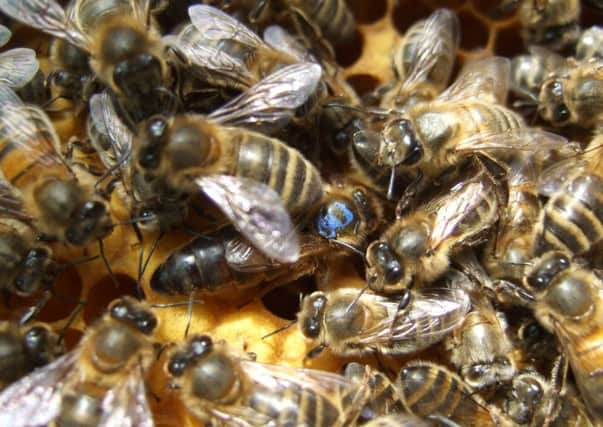Beekeeping: Easy to go cuckoo trying to spot the cunning bumblebee imitators


It turns out that there are lot more types of cuckoo than I’d realised and there are several species of cuckoo bees. I suppose it is quite logical when you come to think about it. If a flying feathered dinosaur can evolve to find ways of fooling other birds to do all the hard work of child rearing then so can a bumble bee.
With the bees the trick is every bit as clever as the one pulled off by the bird. Early each spring the first bumblebees that you tend to see are very large. They are the queens who have spent winter hiding in a small crevice keeping warm and are now heading out to look for a place to build a new nest. You can see them moving around a garden inspecting possible places to go and occasionally landing on a flower to build up strength with a bit of pollen and nectar.
Advertisement
Hide AdAdvertisement
Hide AdOnce they’ve settled on a site they start building up a store of supplies there and laying worker bumblebee eggs so that they can hatch and work on behalf of their queen to make sure the nest has even more stores, and so the queen can build up to laying a few hundred more eggs.
All of this steadily creates a well stocked small colony that you can safely leave in your garden with low risk of being stung. I’ve been asked to deal with a colony in a bird box and one underneath a patio within yards of a kitchen door. In both cases I advised the owner to just do nothing and enjoy watching the bees come and go peacefully about their business. Neither owner regretted doing so or had the least problem.
On reflection I should have told them to keep a sharp eye out for intruders. As soon as a nest is established and has a good supply of worker bees bringing food in for the young there is a strong incentive for a cuckoo bee to arrive. Their method of reproduction is very simple. Don’t bother spending all that energy building up a nest, just wake up a bit later than the other queen, spend your time feeding yourself up so that you’re good and strong and then seek out a place where some other woman has done all the work.
All the cuckoo has to do is to muscle in, force out or kill the old queen, lay a clutch of her own eggs and leave the workers to put all their effort into raising a species of tricksters. This requires evolution to have enabled the cuckoo species to look like the breed of bees that it is trying to imitate and utilize. Even more importantly it requires the cuckoo bee to hide in the nest long enough to acquire the right smells so that the worker bumblebees don’t detect anything wrong and gang up on the cuckoo queen. They will then work away their lives without realising it’s all in the cause of an exploitative opportunist species and not their own.
Advertisement
Hide AdAdvertisement
Hide AdThis talent for mimicry makes it tricky for humans to tell the difference between species. Most of the time you can work out what species you are dealing with by looking at the patterns of the stripes on a bumblebee’s body. One with a buff coloured tail is likely to be a buff tailed bumblebee - not hugely imaginative as names go but easy to remember and get right.
However, if a cuckoo is well enough disguised to fool bees guarding a nest, then it can be very hard for humans to tell the difference between the actual members of an individual species and the cuckoo variety.
When the cuckoo bees emerge from the nest of their victims some are female and others are male. They go off searching for other clever intruders to mate with and then the successful females hunker down for the winter so the whole process can start again. It’s an effective enough strategy for the cuckoos to have survived for millions of years.
Clearly laziness and a bit of cunning works. With each passing year it is a strategy that I seem to find more reasons to wish to copy.